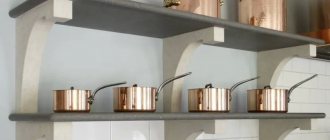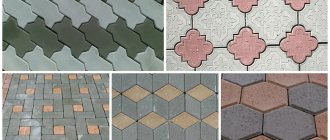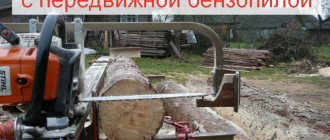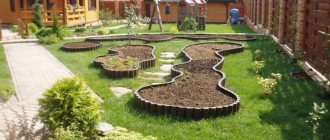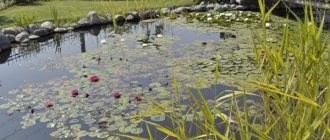Today, either tiles or decorative stone are increasingly used as cladding materials. But it’s no secret that these materials are very expensive on the construction market and not everyone can afford them. The simplest solution to the problem is a do-it-yourself mold for artificial stone.
To make simple-shaped stones that have an even geometric shape, it is enough to use wooden boards as a base, knocking them together.
If you need to make a truly beautiful stone, it is recommended to use silicone as a base.
Main features of artificial stone
Various materials are used to make stone decor. Their choice depends on the place where the artificial stone will be used. Thus, indoor building structures are often finished with gypsum stone. Facades are usually faced with a material made from a cement mixture and various components.
Additives include materials that make it possible to obtain a relief pattern on the finished decor. For these purposes, stone chips, sand, fine gravel, and so on are used. In production, coloring pigments in dry and liquid states are also used. With their help, stone facing material of artificial origin is given the required shades.
Artificially formed stone decor is cast in special molds or made even without their use. This distinguishes it favorably from materials of natural origin. Professionals, strictly following production technology, create artificial stone with lumpy, smooth, layered, fine-grained and other textures.
Layered texture of artificially formed stone decor Source gesso3d.ru
Advantages and disadvantages of artificially formed stone
Making decorative stone material is a creative work. For professionals with relevant experience, this is an easy process. At the same time, artificial stone has a number of other advantages:
- light weight, which is significantly less than that of a similar natural material, which allows for simpler transportation, processing, and installation;
- the ability to always produce additional volumes of products if there is a shortage of finished material for cladding specific structures;
- real quality control at every stage of production;
- possibility of casting directly at the site where installation is carried out;
- the presence of a smooth back surface, which makes decor installation easier;
- high fire resistance, allowing cladding of fireplaces, stoves and other similar devices;
- availability of components at low prices;
- variety of shapes, colors, sizes, textures.
Different colors and textures of artificial decorative stone Source vitrum-novo.ru
Before you make an artificial stone with your own hands, you definitely need to get acquainted with its disadvantages. Thus, some varieties of this material are manufactured exclusively using complex technologies. Organizing such production requires large financial costs.
Another disadvantage of artificially formed stone decor is that it is less durable than natural material. Although the service life can be 40 years if all rules for the care and maintenance of the lined surface are followed.
Advice from experts
- All stages of production must be carried out very carefully.
- It is important to carefully monitor the proportions of the components used.
- There is no need to rush to remove the finished stone from the molds. It is better to let it sit for a few extra hours so that it hardens well.
- You need to use only high-quality raw materials to ensure that the products are strong and durable.
Making molds for artificial stone yourself will save a decent amount of money. The process is quite simple and anyone can easily handle it.
Types of artificial stone
Only in accordance with the technology and with strict adherence to the recipe is it possible to obtain high-quality decorative building materials. Today, artificial stone is made using different methods. This allows you to obtain a material that differs in name and properties:
- Reinforced monumental stone made from concrete mortar.
It is produced individually by hand using free forming. Its production is carried out directly at the installation site. This technology allows you to create artificial boulders, granite slabs, and cobblestones.
Artificial boulder made of reinforced monumental stone Source baltiya-garden.ru
The mixture for materials is prepared on the basis of dry sand and cement. During its preparation, the components are mixed 1:3. At the same time, from 2% to 6% of pigment is also added. Its amount is calculated depending on the mass of the mixture. When preparing the solution, polymer-based additives are also used.
- Cement-sand molding stone material used during finishing and construction work.
Before you make a decorative stone with your own hands, you need to get acquainted with its properties. The material has increased resistance to low temperatures and excellent strength. The production of this type of stone can be carried out during the cold season. Typically, the manufacturing process is organized in workshops, garages and hangars.
- Artificial stone material based on gypsum.
Its casting is a simple technology that requires a minimum amount of equipment. Stone production is carried out in the warm season or in heated rooms. In this case, the material is used exclusively for internal cladding, as it is not resistant to temperature changes.
Artificial stone material made from gypsum Source prom.st
See also: Catalog of companies that specialize in finishing materials and related work
The mixture used is characterized by rapid hardening. Therefore, it is prepared in small portions, which are immediately poured into special matrices. Typically, no more than 4 minutes are spent on kneading and filling molds. In the production of such decorative stone, water is used, as well as citric acid to slow down the hardening process. Its amount is calculated depending on the weight of dry gypsum and is 1.3%.
Pigments are also used. Their amount is also calculated by the mass of gypsum and usually ranges from 2 to 6%. When selecting the optimal color option for the finished product, several samples are made, during the production of which different percentages of pigment are added to the mixture.
- Ceramic artificial stone is one of the most expensive facing stone materials.
Its production is carried out under exposure to high temperatures by firing or using the hardening method. The manufacturing process is always carried out in a heated room.
Ceramic stone in the bathroom Source pinimg.com
- Polyester decorative stone material obtained using synthetic substances.
Its production is carried out using hot hardening. Mineral fillers are used to make stone. During its production, a vacuum environment is created, which is required for curing the material. Therefore, production is carried out only in specially equipped workshops.
- Cast decorative stone made of acrylic, the production of which is characterized by cold hardening.
The material is produced using a vibration stand and strictly according to the instructions. Many of its properties are superior to those of other similar stones. In this case, it is possible to change the shape of the acrylic material when exposed to high temperatures and without loss of quality. Its maximum value is 210°C.
On a note! Decorative stone made of acrylic is characterized by the absence of pores and resistance to chemical reactions. It is able to provide a high level of hygiene. Therefore, it is often used in bathrooms, swimming pools, corridors, kitchen areas, terraces and verandas.
Decorative acrylic stone Source sense-life.com
- Liquid decorative stone material on gelcoat.
Its hardness is lower than that of cast stone. The reason for this is the smaller amount of mineral fillers used. Products of complex shapes are made from the mixture. In production, 2 types of composition are used. They differ in components and percentage of filler.
So, the primer composition of the gelcoat is 20%, and the front composition is 40%. The back compound is also used. It consists of a filler to which pigment is added in an amount of maximum 6%. The applied compounds set within 30 minutes, but decorative stones on the gelcoat are laid only after 24 hours.
Liquid stone product Source filigrano.by
Preparing silicone for pouring
To make silicone, two components are needed: a catalyst and a hardener. It is necessary to read the instructions and carefully follow the proportions. Next, combine the components together and then mix thoroughly using a drill or electric mixer.
When the mixture is thoroughly mixed, you need to leave the silicone to infuse for 20-30 minutes. At this time, you should once again check the previously prepared elements to make sure that everything is done efficiently and reliably. It is recommended to make several holes in the plasticine.
Matrices for decorative stone material
There are different options for how to make a stone with your own hands. However, most of them are based on the use of special forms. Such matrices are available in different designs. There are more than a dozen varieties of them.
Different options for matrices for decorative stone Source twimg.com
Despite the large number of types of matrices, the following types of forms are most often used:
- Polyurethane matrices in finished form, used for the manufacture of small quantities of stones. They are durable and expensive
- Lost wax molds made of clay. They are used when applying wax. With their help, artistic casting and modeling are performed.
- Silicone matrices, which are used in small industries. Such forms allow the stone to be produced individually. Silicone matrices become deformed during operation. This allows you to make only about 10 castings.
Advice! Silicone matrices should be used on a sand bed. The reason for this is their change in shape when exposed to vibration and heat. Before casting begins, sand is poured into the pan, and then the matrix is deepened into it by a third of its height. In this case, be sure to check the horizontal position of the form using a level.
A simple way to make decorative stone
This option involves the production of artificial stone material by pouring 2 layers of the mixture into a mold. First, 3 parts of sand and 1 portion of cement are combined. Then the liquid dye is diluted with water. Its amount is usually approximately 2-3% by weight of cement. Then water with pigment is added to the cement-sand mixture until a homogeneous mass is formed, similar to thick sour cream.
The prepared solution is poured into the artificial stone matrix. It is only half full. Then the mixture is compacted and evenly distributed by shaking the mold and tapping, for example, on a table or other base on which the matrix is located.
A metal reinforcing mesh is laid on the first layer and the second part of the solution is poured, which must first be prepared without pigment. Then two lines are drawn crosswise on the surface of the mixture. They will improve the adhesion of the material during installation.
After about 12 hours, the hardened stone is removed from the matrix and dried. Then the mold is cleaned, washed and poured again.
Making gypsum stone
In the production of decorative stone materials, building gypsum is often used. A mixture is prepared from it, the consistency of which should be similar to thick sour cream. When mixing, a pigment of the required color is also used.
The prepared mixture is poured into a silicone mold only up to half its height. The matrix is pre-lubricated with grease. Then a fine metal mesh is laid to enhance the strength of the stone. The mold is then filled to the brim with a mixture that lacks pigment.
The filled matrix is shaken several times so that the gypsum mixture is evenly distributed in the mold. If the curing process occurs quickly, then milk is used during mixing. It reduces the speed of setting of the mixture.
Where is homemade polymer used?
This material is used in almost every area of human life - for household purposes, in construction, manufacturing, medicine. Silicone has earned popularity due to its characteristics that are not available in analogues. The substance helps reduce or increase adhesion processes and add hydrophobicity to the object.
The substance retains its basic properties even in extreme conditions - at high, low temperatures, and high humidity. The following qualities of the material should be noted:
- bioinertness;
- good elasticity;
- long operating time;
- environmental friendliness.
In industry, liquids and silicone emulsions are good anti-adhesive lubricants, which are used for large-sized molds, the manufacture of lubricants, cooling, shock-absorbing compounds, and sealants. Silicone defoamers are very popular.
Silicone is used to create bushings, gaskets, rings, cuffs, plugs, as well as other special parts that can be used at temperatures from minus 60 to plus 200 degrees.
A few more qualities inherent in the composition are resistance to:
- radiation;
- sea water;
- sun rays;
- alcohol;
- alkalis, acids;
- boiling water;
- mineral oils;
- electrical discharges.
Silicones are available for sale in a wide range, but some craftsmen prefer to make them themselves. This allows you to cut costs and express your creativity.
Making your own silicone can be done using several methods. But the resulting substance is not identical in properties to the purchased one. Homemade mixtures are inferior in quality to factory samples, and can only be used at home.
Making decorative stone without using a mold
The production of artificial stone material is carried out not only using special matrices. It is also possible to make such decor without the help of molds. This option is very simple. Despite this, it allows you to produce original stones for cladding building structures in a private house.
Before you make an artificial stone without a shape with your own hands, you need to prepare a stencil. It is performed on ordinary oilcloth. Instead, a cardboard sheet of suitable size is often used. The dimensions of future stones are drawn on the selected material.
Although the entire process of making artificial stone decor is simple, it requires time and minimal experience in working with building materials. Therefore, it will be easier for many to purchase ready-made products and hire specialists to install them.
Decorative stone created without using a mold Source samsmogy-remont.ru
The process of manufacturing artificial stone decor is performed as follows:
- Construction plaster is mixed with water in a silicone container. Instead, you can use any container, inside of which a garbage bag is previously placed. Moreover, you can always throw it away after use.
- The stencil is protected with transparent oilcloth.
- The prepared mixture is distributed over the surface of the oilcloth within the boundaries indicated on the stencil.
- The drying gypsum mixture is given the required relief. To do this, use spatulas of different sizes.
- The drying gypsum mixture is divided into separate fragments in accordance with the markings on the stencil.
- The finished hardened tiles are removed from the oilcloth after about 15-20 minutes.
- Tiled decorative material is dried for 1 day.
Area of use of decorative stone
Thanks to its significant advantages, artificial stone is an ideal finishing material. It is used indoors and on facades, depending on the manufacturing method. In addition, certain types of material are used to manufacture specific products. Let's take a closer look at what can be made from artificial stone:
- countertops for kitchen furniture, which are highly resistant to damage;
- bar counters that are durable;
- sinks and sinks that have an attractive appearance and original design;
- window sills of various sizes and shapes;
- coffee and dining tables;
- stylish and custom mirror frames;
- shelves in a variety of colors.
Stone shelves in the interior Source design-homes.ru
Decorative stone material is used to create wall panels, when cladding steps, railings, and arched structures. The use of artificial stone in the interior and when arranging a garden plot is an indicator of respectability and excellent taste.
Description
In appearance, this material is very similar to natural rocks . The tiles obtained from a hardened special mortar have proven their practicality and durability.
Natural minerals, when external conditions, temperature, humidity change, change their properties and characteristics, which is reflected in their appearance. The weight of natural stones increases the load on the foundation or walls.
Artificial stones are free from all these disadvantages. In addition, the significantly lower price, compared to natural wood, has finally won over buyers.
An increasing number of people want to surround themselves with natural materials, but at the same time take advantage of modern technologies: reliability, durability, and a constantly well-groomed appearance.
Briefly about the main thing
Artificial stone is a material made from cement and sand. Gypsum is also used. The composition also includes water, dyes, and plasticizers. Ceramic, polyester, acrylic, reinforced and liquid stone on gelcoat are also produced. They are used to create shelves, sinks, furniture items, and boulders.
The material is lightweight, fireproof and affordable. It is made in different colors, shapes and textures. Its durability is less than that of natural stone.
During production, molds are used in which the mixture hardens. Coloring is done during the mixing process or after the tiles have dried. There is a manufacturing option using a lined stencil and without a mold.
Ratings 0
Preparation of the solution
If you decide to make a polyurethane mold model, you can purchase a two-component solution, such as Duramould ET 45A. Solutions produced by Mold Star, E-Series, NY 600 Series are also suitable.
The package includes two containers with two types of liquid - white and red. It is necessary to take 0.5 liters of each solution and mix it in a bucket with a mixer.
